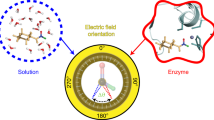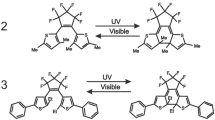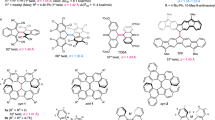Abstract
A RELATIONSHIP can be found by plotting the potential barrier to internal rotation of ethyl halides against the ionization energy of the substituent halogen atom (Fig. 1). The results are given in Table 1.
This is a preview of subscription content, access via your institution
Access options
Subscribe to this journal
Receive 51 print issues and online access
$199.00 per year
only $3.90 per issue
Buy this article
- Purchase on Springer Link
- Instant access to full article PDF
Prices may be subject to local taxes which are calculated during checkout
Similar content being viewed by others
References
Smith, D. C., Saunders, R. A., Nielsen, J. R., and Ferguson, E. E., J. Chem. Phys., 20, 847 (1952).
Fateley, W. G., and Miller, F. A., Spectrochim. Acta, 19, 611 (1963).
Lide, D. R., J. Chem. Phys., 30, 37 (1959).
Flanagan, C., and Pierce, L., J. Chem. Phys., 38, 2963 (1963).
Kasuyo, T., Phys. Soc. Japan J., 15, 1273 (1960).
American Institute of Physics Handbook (1957).
Morgan, J. P., unpublished thesis, Univ. British Columbia (1964).
Author information
Authors and Affiliations
Rights and permissions
About this article
Cite this article
LIELMEZS, J., MORGAN, J. Relation between Internal Rotational Barrier and Ionization Energy of Substituent Atoms in Ethyl Halides. Nature 202, 1106–1107 (1964). https://doi.org/10.1038/2021106b0
Issue Date:
DOI: https://doi.org/10.1038/2021106b0
This article is cited by
Comments
By submitting a comment you agree to abide by our Terms and Community Guidelines. If you find something abusive or that does not comply with our terms or guidelines please flag it as inappropriate.



